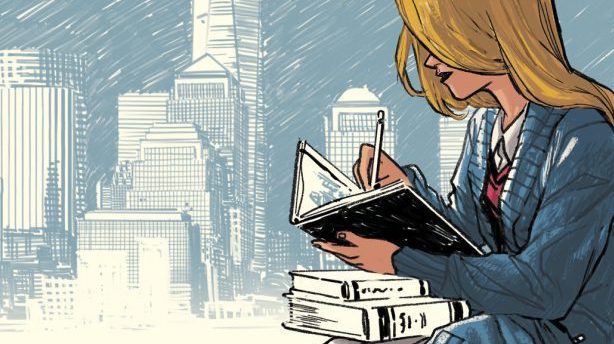With Jane, a Crazy Ex-Girlfriend writer butchers a classic, making Brontë boring

Fans of Aline Brosh McKenna, producer and writer for Crazy Ex-Girlfriend, may have heard that she was working on a graphic adaptation of Charlotte Brontë’s classic novel, Jane Eyre, but the arrival on shelves has been fairly quiet. Especially given that Ramón Pérez supplied the art for Jane (Archaia), the relative lack of press around this book is surprising.
Archaia and McKenna are lucky that few people even seem to know the book exists. Pérez and colorist Irma Kniivila deliver a stunning book that’s a joy to look at from start to finish. There are beautiful watercolor washes and great texture, and Pérez brings his signature eye for drama and motion with the level of skill that you would expect from someone as talented and experienced as he is.
Unfortunately, Jane is a painful read. With a different title, it would be a much better book, but claiming to be a Jane Eyre adaptation leaves it feeling flat. It’s a perfectly reasonable, almost retro romance comic that bears no resemblance to Brontë’s work. McKenna has removed the first and third acts from Brontë’s novel, which leaves readers with no sense of why they are supposed to sympathize with the titular character.
In interviews, McKenna rarely mentions Jane, focusing on her love for the book’s flawed and miserable male lead, Rochester. The revelation that the book was originally titled Rochester and has already been optioned as a film only adds weight to the theory that McKenna was not only not invested in Jane, but apparently, not in this book either. Pérez does an admirable job adapting what was likely a movie script handed over with a lot of missing details, but the pacing is off. The pages are filled with the type-glaring inconsistencies that come with writers inexperienced with comics and unclear on how comics collaborations work.
What’s worse is that McKenna has taken the teeth out of Brontë’s work. Her versions of Jane and Rochester are physically stunning and without fatal flaws, despite repeated protestations that Jane is “invisible” and Rochester is “creepy.” Jane spends the entire book reacting to other people, showing none of the ambition or combative attitude that Brontë’s heroine did. All of the behavior and history that frames Brontë’s Rochester as worthy of sympathy but not a good person are removed, making him the protagonist that Jane should be. There are the requisite people of color, all three of them sidekicks to Jane’s increasingly frustrating self-destruction; it becomes clear about halfway through the book that her gay roommate, Hector, only exists to give her a makeover, because he’s a fashion student.
McKenna commits myriad sins, but perhaps the most glaring is that she had no reason to do this adaptation at all. In order to revisit and revamp a classic story like Jane Eyre, you should to have something new to offer. And in order to get away with a tired trope like “pretty white girl art student moves to New York and finds love,” you absolutely must have something new to offer. McKenna has failed spectacularly on both counts, delivering what amounts to mediocre Jane Eyre fan fiction starring Bruce Wayne and Taylor Swift. There’s no attention paid to the core of what made the original so revolutionary or how modern life actually works. It’s particularly concerning because Archaia and parent company Boom! Studios often target the YA market, and the erasure of Rochester’s worst behavior frames what’s essentially an emotionally abusive relationship between a married man and his much younger employee as a grand romance. Instead of adapting a remarkable novel, McKenna gave readers a Lifetime movie in graphic form.